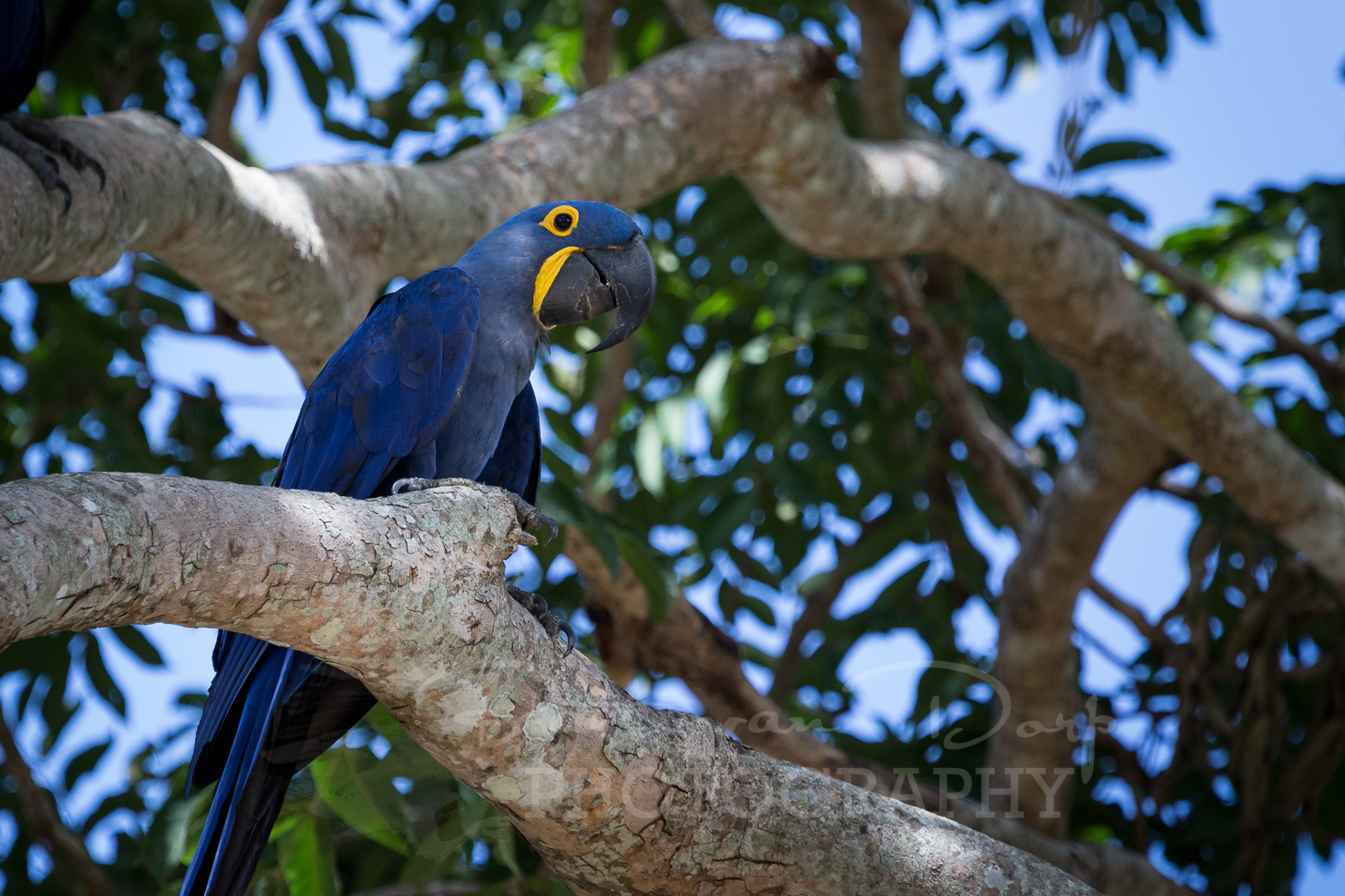Hyacinth Macaw
(Anodorhynchus hyacinthinus)

The Amazon Rainforest and the Pantanal, an open tropical wetland area in South America
About me
Not to brag, but I’m the largest flying parrot in the world — and I’ve got a pretty big voice too — you can actually hear me from a mile away! And did you check out my gorgeous blue color?
Hyacinths like me love wooded, open areas, making our home in the Amazon Basin and beyond to the Pantanal, a flooded grassland on the national border between Brazil, Bolivia, and Paraguay.
As an important regional symbol, we’ve been thankful to benefit from legal protections and serious conservation efforts. But all this time, agribusinesses like soy and beef have continued to attack our habitat, with massive fires in the Pantanal and deforestation in the Amazon destroying our trees and fragmenting our populations.

Fast Facts: Did you know?
After the well-known Amazon rainforest, the second-largest habitat area in Brazil is known as the Cerrado, where some of us make our homes. This region has incredible biodiversity, and it’s also endangered.
Our size and strength allows us to crack the toughest nuts: macadamias, brazil nuts, and even coconuts! Many of these tree species rely on us to spread their seeds, because most animals don’t have the jaw strength to break through like we do!
The rainforests of the Amazon, Congo, and Indonesia are our last best line of defense against the biodiversity and climate crisis. But 17 corporations are making massive profits by driving their destruction and the violation of human rights. That has to end NOW.
Why I want to Keep Forests Standing
Even with the successful conservation efforts over the past decade, it’s likely that our population will become endangered again in the very near future, because the rate of deforestation in the Amazon threatens its future — and ours. As climate change worsens and agribusinesses tear down our trees, we’re running out of place to live, nest and eat. And if the Amazon tips from being a rainforest to becoming a savannah — like many scientists fear could happen as soon as the next decade — our future and our many rainforest friends are at risk.



 The Amazon Rainforest and the Pantanal, an open tropical wetland area in South America
The Amazon Rainforest and the Pantanal, an open tropical wetland area in South America